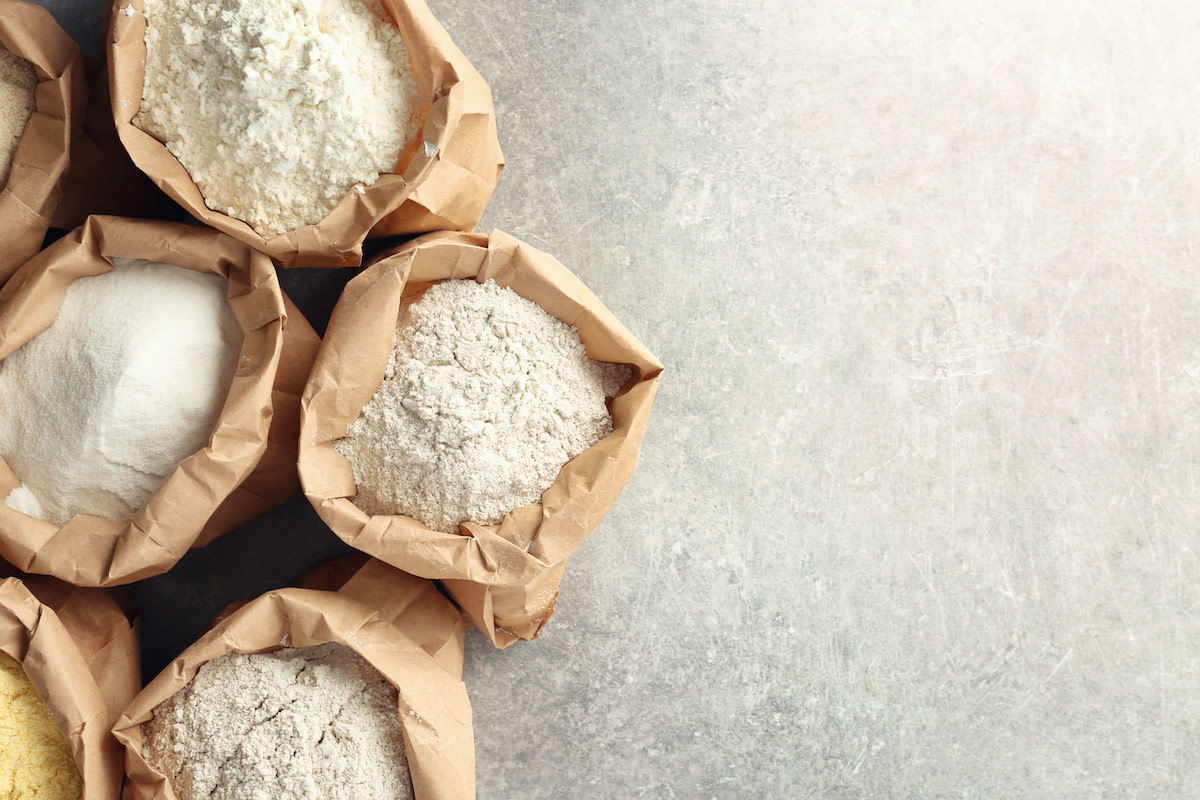Self-Rising Flour vs. All-Purpose Flour: Comparing the 2 Flours
Written by MasterClass
Last updated: Sep 23, 2021 • 3 min read
If a recipe comes down to self-rising flour vs. all-purpose flour, here’s what to know before you decide which ingredient to use.
Learn From the Best
What Is Self-Rising Flour?
Self-rising flour, sometimes written as self-raising flour, combines all-purpose flour, salt, and baking powder, a leavening agent that adds airiness through small gas bubbles released in the dough. An English baker named Henry Jones patented self-rising flour in the late 1800s to improve baked goods during long voyages at sea. His pre-batched flour blend would eventually lead to a whole world of dry mixes—including pancakes, brownies, and cakes—all only requiring eggs and oil.
What Is All-Purpose Flour?
All-purpose flour, or AP flour, is a mild-flavored white flour made solely from the wheat head’s endosperm (the innermost kernel). Also known as plain flour, AP lasts longer than other whole-grain flours but doesn’t contain much nutritional value as a result.
Use this type of flour in various sweet and savory applications, including layer cakes, chocolate chip cookies, muffins, quick breads, pie crusts, and gooey brownies. Make buttery crusts for chicken pot pie, dredge fish for frying, and thicken rich sauces and gravies with the versatile flour.
Self Rising Flour vs. All-Purpose Flour
Self-rising flour and all-purpose flour have similar properties with two key differences: ingredients and uses. Ingredient-wise, self-rising flour contains all-purpose flour, salt, and baking powder, while all-purpose flour only contains ground endosperm.
Use self-rising flour (and variants like self-rising cornmeal) in recipes where an even, consistent crumb is the goal: Think scones, pancakes, cupcakes, muffins, and classic Southern recipes like buttermilk biscuits and cornbread. Alternatively, all-purpose flour works in most baking applications and as a thickening agent: Use it as part of a classic French roux, or mix it directly into stews as a slurry.
Is All-Purpose Flour Self Rising?
All-purpose flour will not rise on its own. If a recipe calls for all-purpose flour, it will typically require a leavening agent like baking soda, baking powder, or yeast to provide lift. To make your own self-rising flour, sift in 1½ teaspoons of baking powder (or a ½ teaspoon of baking soda) and a pinch of fine salt for every cup of all-purpose flour in a large mixing bowl. Whisk thoroughly to guarantee an even distribution, and store the flour in an airtight container.
6 Types of Flours
There are many kinds of flours available for sale at grocery stores and farmers markets. Here’s a small sampling worth incorporating into your pantry rotation:
- 1. Whole wheat: In contrast to all-purpose, whole-wheat flour includes wheat germ, bran, and endosperm. It’s a dense, flavor-packed flour for high-moisture loaves, with a shorter shelf life than all-purpose flour.
- 2. Almond: Almond flour is a nut flour made from finely ground, blanched almonds. The blanching process involves submerging the almonds briefly in boiling water to remove the skins, resulting in flour with a more uniform color and texture. Almond flour is a rich source of calcium, magnesium, potassium, and monounsaturated fats, which can help lower cholesterol.
- 3. Rye: Rye flour, milled from a dark, flavorful grain, imparts a deep nutty flavor to different kinds of bread. Rye breads like German pumpernickel or Danish rugbrød are good examples of the form. Since it doesn’t produce much gluten on its own, combine rye flour with higher protein flours for a boost.
- 4. Bread: Bread flour has a particularly high protein content, about fourteen percent. When yeast ferments during the early stages of baking bread, carbon dioxide gets trapped by the protein-bonded flour, resulting in stretchy, chewy dough with air pockets.
- 5. Cake: For spongy, light-as-air cakes, use cake flour (also known as pastry flour), made from finely ground soft wheat. The flour has a low protein content (thus less gluten), resulting in a lighter, loosely structured crumb.
- 6. 00: 00 flour is an extra-fine flour, graded on an Italian milling system, perfect for pizza and pasta making. While the soft texture is an immediate benefit, it’s the 12.5 percent protein level and corresponding gluten content that gives perfect pizza dough and silky noodles the right amount of stretch and snap.
Bready for More?
We’ve got you covered. All you knead (see what we did there?) is The MasterClass Annual Membership, some water, flour, salt, and yeast, and our exclusive lessons from Apollonia Poilâne—Paris’s premier bread maker and one of the earliest architects of the artisanal bread movement. Roll up your sleeves and get baking.
